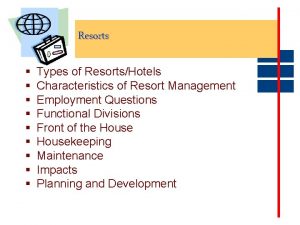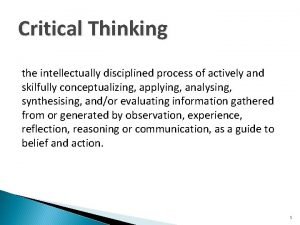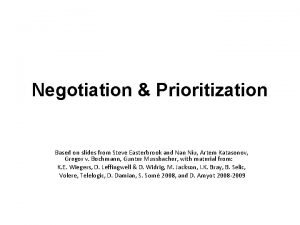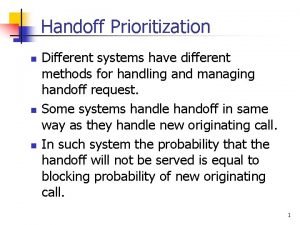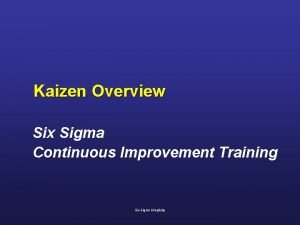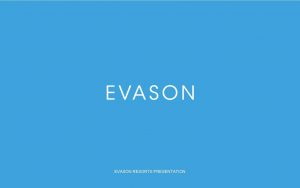PRIORITIZATION AND DISCIPLINED PROCESS Prism Hotels and Resorts
































- Slides: 32

PRIORITIZATION AND DISCIPLINED PROCESS Prism Hotels and Resorts Leadership Conference 2012 Why is it the harder I work the less I accomplish?

Do I have ADD? Take the test and see if you do!

TWO BY TWO 2 x 2 – a prioritization tool

2 x 2 – The I + stories I tell myself I have “too much on my plate” I am “totally overwhelmed” I can’t “change fast enough to keep up” I feel “the harder I work the behinder I get” I’m a “great multi-tasker – I just have too many tasks” I want “to be a proactive leader, not a reactive manager – but” I end “most days feeling that I accomplished nothing except putting out fires and babysitting” I don’t “feel fulfilled, because I can’t ever seem to complete one thing before getting steam rolled by another”

2 x 2 – the They + stories I tell myself They have “no clue how hard I am working” Can’t They “see that I am drinking from a fire hose” They don’t “know what I go thru everyday” They need “to walk a mile in my shoes” If They “give me one more freaking project, spreadsheet, website, new policy, new procedure, form or format, report or “tool” I am going to tell them just what a TOOL THEY REALLY ARE!!!!”

2 x 2 -Three Secrets of Successful People Paint me a picture of a successful person you know How did they get there? #1 know where you want to go and what you need to do to get there – be a visionary #2 carefully prioritize in a value vs. effort metrics – create a values based plan #3 execute in a premeditated fashion - make conscious commitments to execute your strategy and make conscious tradeoffs when the winds of change blow in

Good business leaders create a vision, articulate the vision, passionately own the vision, and relentlessly drive it to completion. ~ Jack Welch 7

2 x 2 – A Prioritization and Execution Tool First you need to know your strategy – what are 10 or so projects that you need to do to reach your goals? What is the difference between a task and a project Portions of a project Daily “Non-negotiables” – check lists Force rank projects by Value Effort Know your limits – sometimes you must “ignore or delay” Think “Inside the Box”

2 x 2 – Let’s take it step by step # 1 – List out the Projects – Projects are: Take more than two to three days and in some cases several weeks to accomplish Are Multi-purpose in nature The roadmap to your success First what is success? What are your MBO’s both personally and professionally as an Individual Business Unit CEO? What are the routes you must take (projects to be accomplished) to reach your destination

2 x 2 Tasks can be: One time action steps that rolled up together accomplish the desired activities and represent the actions that must be accomplished to complete our project These must be detailed and put into the appropriate timeline to achieve your goals (first things first 0 Action steps that must be completed each day to achieve success and do your job – i. e. non-negotiables Gantt chart vs. Daily, weekly, monthly checklists Either way you MUST document if you want to achieve them!

2 x 2 –Force Rank Your Project To Do list Make Two Lists 1 – Highest Value – if I could only do one thing this is what I would do 2 – Highest Cost – which project will take the most time and consume the most resources Which 5 are highest value and lowest cost Which 5 are highest cost and highest value Which 5 are lowest cost and lowest value What else do I have left?

Sample Prioritization Matrix Drive Daily Selectively Invest High Value Delay Work In Ignore Low High Effort/Cost Low 12

Sample Prioritization Matrix Drive Daily Selectively Invest High Value and Lower Cost “ 3 -4” go here – these are the “low hanging fruit – let’s work to complete these projects first High Value an d High Cost “ 3 -4” go here – pick choose and plan when you do these activities Value Work In Delay Ignore Low High The rest of the stuff – all good stuff, but we just don’t have the time or resources (or forced urgency) go here The “ 5”items that are lower value and lower cost – not that they aren’t important go here – let’s work on these as time permits as part of our “day job” Effort/Cost Low 13

Now let’s create your personal 2 x 2 Drive Daily Selectively Invest High Value Delay Work In Ignore Low High Effort/Cost Low 14

2 x 2 – now I got it what do I do with it Use it to time block your day, week and month Drive daily ALWAYS come first Selectively Invest must be planned for and time blocked Work in must be put into your daily checklists to ensure you Multi-Purpose vs. Multi-Task – ask yourself how can I accomplish these items in conjunction with my Daily Check list of Non. Negotiables to make my life easier and better tomorrow

2 x 2 Commitments and Trade-Offs Plan to fail or fail to plan – Project Management – How to establish conscious commitments and stick to them – OK but what about those I+ and They+ statements – how do I use this tool to move into the proactive leadership zone? If you and you boss know and agree to these projects and prioritization – you can effectively manage conversations and trade off where necessary

2 x 2 – Next Steps Think about it and revise it as necessary Time block a time with your boss to gain consensus Time block a time with your leadership team to share your 2 x 2 so that everyone knows your priorities and can assist you – once you all of your team on 2 x 2’s you can cross prioritize and support each other This is not a tablet sent down from the mount it is a fluid document that changes as you complete goals, accomplish projects or re-prioritize as market conditions change

LESSONS IN LEADERSHIP Using Project Management Tools to Drive Results

Gantt Chart A Gantt chart is a type of bar chart that illustrates a project schedule. Gantt charts illustrate the start and finish dates of the terminal elements and summary elements of a project. Terminal elements and summary elements comprise the work breakdown structure of the project. Some Gantt charts also show the dependency (i. e. , precedence network) relationships between activities. Gantt charts can be used to show current schedule status using percent-complete shadings and a vertical "TODAY" line as shown here. Although now regarded as a common charting technique, Gantt charts were considered revolutionary when they were introduced. In recognition of Henry Gantt's contributions, the Henry Laurence Gantt Medal is awarded for distinguished achievement in management and in community service. This chart is used also in Information Technology to represent data that has been collected.

Gantt Chart – Really now Basically a Horizontal Bar Graph Used to track and measure project flow and process completion Components of Prism Gantt / Project Management Tools Project Tasks Owner or leader of the action Support staff to complete the action or required steps Start and Completion Dates Estimated resources needed to complete the task (time and potentially dollars) Completion progress in % to value Task Status Desired Outcomes or Results (Qualitative and/or Quantitative) Comments to bring clarity on progress or results

Gantt Chart to Establish Sales Action Plans Pick a segment or target account Let’s Use – Weekend Sports Teams Write a SMART Goal (based on budget) Determine the time Frame (let’s use 30 days) Brainstorm Ideas Past ideas – new ideas – whiteboard = no idea is to hard, to easy, to far fetched (we may not use them all) These Ideas should be projects – Not tasks we will get to that. Force rank the ideas by potential outcome and by energy consumed

Gantt Chart to Establish Sales Action Plans Pick the top Force Ranked Idea / Project – this should be the item that can produce the greatest results with the least amount of effort Refer back to your SMART goal and determine what portion of the goal this project may yield for you (quantification of desired results) Now Determine what seven to ten activities (tasks) you will need to accomplish to achieve – if you have more than 7 to 10 tasks – this may not be the highest value / least consuming project to tackle first

Gantt Chart to Establish Sales Action Plans List the activities or task in chronological order of completion Determine for each task Who will own it - Champion What others will be able to help the champion – support team When will the task start – Start Date When will the task be completed – End Date What resources do I need (time or dollars) to complete the task What % complete are we currently Status of the task Desired outcomes / Actual outcomes Comments / bottlenecks / Concerns / Learning's Let’s Git ‘Er Done!

Champion: Who is in the driver seat Who owns accountability Who will report out on progress and make adjustments or reach out for additional resources Who will keep the support team on task

Support team Which individuals either inside or outside the organization can help us get this task done? Who has capacity to have task items delegated to? Who has a specialized talent that we can leverage to accomplish this task Who has the passion to help us achieve our goals

Mile stone dates When will each task start? When can we reasonably expect the task to be completed by? In many cases this will be the benchmark we use to determine tracking and if we need to make adjustments to our strategies

Resources Time / Talent / Treasure Time is our most valued commodity in today’s economic environment – and will be the resource that we most heavily rely on How long – in real hours will need to be devoted to this task Lesson #1 It will always take longer and be harder than anticipated to achieve worthwhile goals

What is the status of our task What % completed are we Either in time or task completion What is the status Purple = Not Yet Started Green = Tracking and On-going Yellow = Minor Bottlenecks that will require additional resources to complete – I NEED TO CHECK IN on THIS! Red = Major Bottlenecks or danger of failure – I NEED TO REVALUATE THIS TASK / PROJECT with my boss Blue = Done BABY – Shall we codify?

Achievement Assessment What are our desired results at the start? What results did we actually achieve? If achieved – should I do it again was it worth the resource allocation to do all over (now that I have it all documented!) If not achieved – why not Ill conceived or Ill executed? Process Problem or People Problem?

Comments and concerns Document: Key learning's Big Wins Challenges This is your note pad to yourself for the next time that you do this task

Gantt Chart Methodology - why We often fail because we bite off more than we can chew – resource allocation We need to prioritize our time and talent to get the most out of life We need to hold ourselves accountable to achieving what we want to achieve We need a tool to help us become proactive leaders rather than reactive managers Let’s not reinvent the wheel Shift from activity based culture to a results base culture

Group Exercise Each team will take one market segment Each team will create one SMART goal Each team will create one Gantt based project (action plan) Each team will detail out the tasks Each team will report out on the process and the outcome All action plans will be shared to all hotels! (see 50% of your Q 2 action plans will be written for you!)
 Prism hotels and resorts
Prism hotels and resorts Benchmarkk
Benchmarkk Park plaza hotels & resorts
Park plaza hotels & resorts Program prioritization process
Program prioritization process Characteristics of beach resort
Characteristics of beach resort Sochi ski resorts
Sochi ski resorts History of resort
History of resort Sanvo resorts private limited
Sanvo resorts private limited Bariloche resorts
Bariloche resorts Los alamos resorts
Los alamos resorts Project intake process presentation
Project intake process presentation Intellectually disciplined
Intellectually disciplined Disciplined agile consortium
Disciplined agile consortium Disciplined agile consortium
Disciplined agile consortium Shuhari agile
Shuhari agile Superlative tasty
Superlative tasty The disciplined mind example
The disciplined mind example Disciplined agile delivery roles
Disciplined agile delivery roles What is discipline
What is discipline Rpa prioritization matrix
Rpa prioritization matrix Cvssv
Cvssv Damian2005 trick
Damian2005 trick Wsjf score
Wsjf score Prioritization
Prioritization Risk prioritization in software engineering
Risk prioritization in software engineering Abcd prioritization nursing
Abcd prioritization nursing Infrastructure project prioritisation matrix
Infrastructure project prioritisation matrix Prioritization
Prioritization Ticket prioritization
Ticket prioritization Kaizen alternatives
Kaizen alternatives Division hotels and restaurants florida
Division hotels and restaurants florida New money spent by tourists and then respent by hotels
New money spent by tourists and then respent by hotels Chapter 2 hospitality and tourism
Chapter 2 hospitality and tourism




